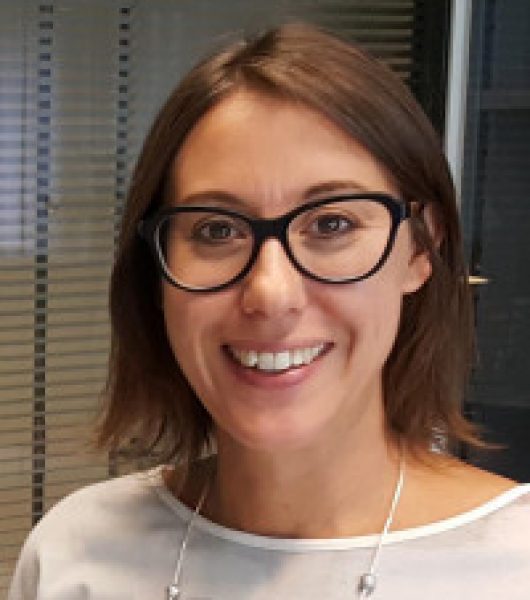Inside the game engine
With the help of our researcher Antonio Bucchiarone, we look into the model on which the gamification of many FBK projects on smart communities are based. The study was presented during the Models Conference 2019 which was held in Munich in September
<<Video games are “learning and emotional machines”.
It takes just looking at gamers to realize the motivational and emotional power in which they are immersed.
Engagement is the primary metric to guide the daily behaviors of us humans:
greater productivity in work contexts, learning, customer loyalty, monetization,
positive behaviors in public contexts and much more >>
Fabio Viola, engagement designer
KIDS GO GREEN is an interactive educational tool, a game that counts the kilometers covered by children using sustainable means of transportation (on foot, by bike, with the school-bus) and allows the school to take a virtual journey, visiting different cities, countries and environments, thus transmitting the value of sustainable kilometers traveled together. The game is supported by a platform that captures sustainable kilometers covered by the children, records game progress and, through a Web app, shows the results achieved in an interactive map. The journey and the stages of the trip can be customized based on the school/class academic interests. Each stage can also be associated to multimedia educational material to be used during school lessons as a cross-disciplinary in-depth study tool. In schools where the walking bus service is active, the integration with the smart walking bus app called “piedibus smart” enables users to automatically track the kilometers covered by children and walking bus volunteers.
The Trento and Rovereto Play & Go game tracks users’ trips with the Viaggia Play & Go app. Playing is simple, just pick sustainable mobility solutions to earn points and move forward in the game. Participants can have fun collecting points and taking weekly challenges. That is not it: they can also invite their friends and, by playing together, climb the rankings. Prizes are offered each week and, day after day, the game helps make the city more sustainable. The game has a duration of 26 weeks, from autumn to spring. Players who use the Travel Play & Go app during the Game to track their itineraries have the opportunity to earn Green Leaves points that attest to the use of sustainable mobility solutions. Based on points accrued, Players will occupy a position in the weekly and global rankings which will be updated in real time throughout the Game. The Game also includes custom challenges that, if met, allow users to earn additional bonus points.
As part of the European initiative INNOWEEE, WEEE-R-robots – A lezione di RAEE is a pilot project that focuses on awareness and education on reducing, reusing, recycling Waste Electrical and Electronic Equipment (WEEE), through recreational and educational activities that involve the entire school community. Children collect and categorize their used EEE and WEEE at home, with the help of family members. At school, thanks to a Web App, all items collected are recorded and contribute to earning class virtual credits. The Web App helps sort between working items, items that can be repaired and waste; it also guides children and teachers as to how to dispose of them correctly. Accumulated credits allow the class to build a virtual robot that, thanks to the participation of the whole school, will lead to the creation of a team of robots that will clean up the world from waste. The Web App also provides feedback on the quantitative impact obtained through the collection recycling campaign and provides teachers with educational multimedia contents that can be used in the classroom. The residual value of working or repairable items is used by the school to purchase refurbished hardware resources.
What do these three FBK projects have in common? The same gamification model, increasingly used to create solutions to inspire the behavior of populations (the so-called target users). More in detail, these systems are generally exploited to maintain user engagement in certain activities and/or to modify an initial behavior through game elements, such as point rewards and challenges and/or the promotion of logics competition and/or cooperation with other Players. Gamification mechanisms are well defined and consist of different ingredients that must be properly combined; among these we find the one-player/multiplayer challenges aimed at achieving a certain goal and providing a reward adequate to the effort made.

Since current approaches are largely based on manual tuning (coding), when games grow in complexity, keeping track of all mechanisms and maintaining implementation can become a tedious and error-prone task. The study conducted by Bucchiarone and Marconi together with Antonio Cicchetti (IDT Department @ Mälardalen University, Västerås – Sweden) describes a multilevel modeling approach for the definition of gamification mechanisms, from their design to their implementation and subsequent evolution.
The approach is validated using two gaming systems in the education and mobility sectors (Play & Go and Kids-Go-Green respectively). The paper, presented in Munich during the MODELS Conference 2019, builds on the experience gained in the design of these gaming systems. The suggested solution is based on multilevel modeling, so that the definition of the game is executed by subsequently improving game specifications, from the definition of the main components of the game to the instancing of concrete game elements. The suggested layered architecture allows domain experts to remove implementation issues in order to focus on the details closest to their skills, in particular the gamification techniques and the domain of the application targeted by the game. These mechanisms not only reduce the complexity of defining gaming applications, but also reveal opportunities to specify simulations and adaptations for particular game scenarios.
The gamification framework is implemented by the DAS unit and Smart Community Lab, the Smart Cities and Communities Line of the ICT Research Center @ FBK.

